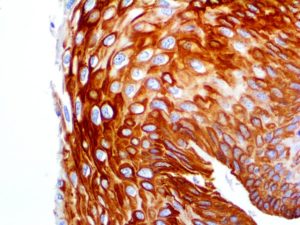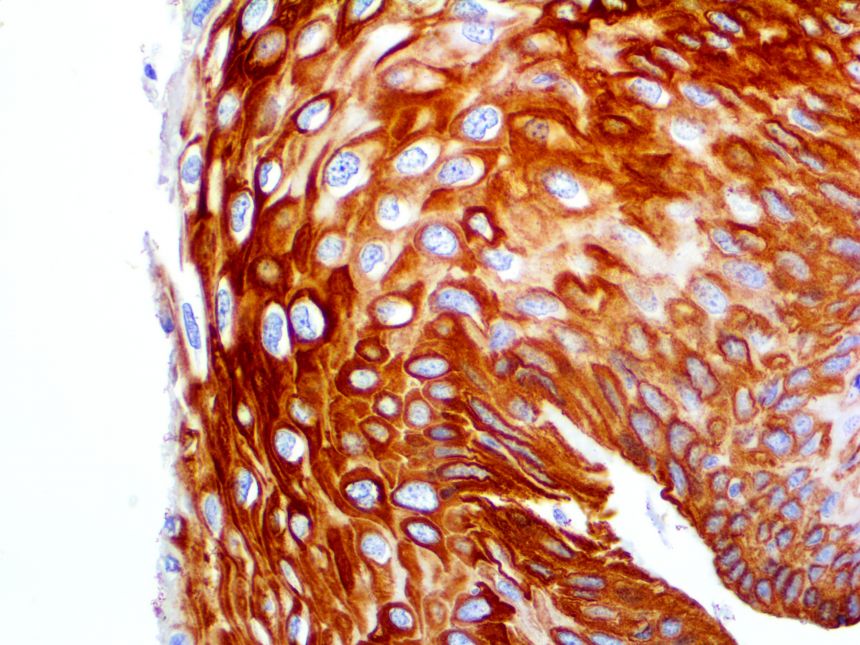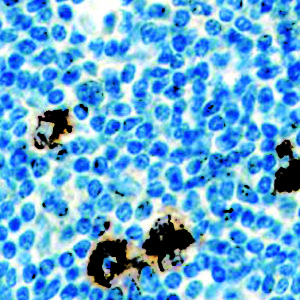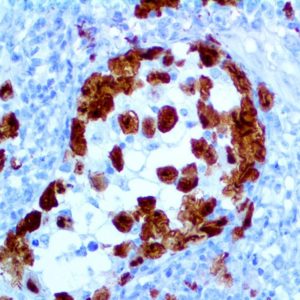
IHC of CK 14 on an FFPE Cervical Tissue
| Intended Use | For In Vitro Diagnostic Use | |||||||||||||||||||||||||||||||||||
| Summary and Explanation | Cytokeratin 14 is a Type I polypeptide found in basal cells of squamous epithelia, some glandular epithelia, myoepithelium, and mesothelial cells. It is usually found as a heterotetramer with two cytokeratin 5 molecules, and a Type II keratin. Together, they form the cytoskeleton of epithelial cells. Mutations in the genes for these cytokeratins are associated with Epidermolysis Bullosa Simplex. Cytokeratin 14 has been studied as a prognostic marker in Breast Cancer. This antibody labels the basal layer of stratifying squamous and non-squamous epithelia. The staining pattern is cytoplasmic. It recognizes Basal Cell Carcinomas and Squamous Cell Carcinomas. Anti-CK14 has been demonstrated to be useful in differentiating Squamous Cell Carcinomas from other epithelial tumors. This antibody has also been useful in separating oncocytic tumors of the kidney from renal mimics, as well as in determining metaplastic Carcinomas of the Breast. | |||||||||||||||||||||||||||||||||||
| Antibody Type | Mouse Monoclonal | Clone | LL002 | |||||||||||||||||||||||||||||||||
| Isotype | IgG3 | Reactivity | Paraffin, Frozen | |||||||||||||||||||||||||||||||||
| Localization | Cytoplasmic | Control | Squamous Mucosa, Prostate, Breast, Tonsil, Salivary Gland, Skin, Cervix Carcinoma, Squamous Carcinoma | |||||||||||||||||||||||||||||||||
| Presentation | Cytokeratin 14 is a mouse monoclonal antibody derived from cell culture supernatant that is concentrated, dialyzed, filter sterilized and diluted in buffer pH 7.5, containing BSA and sodium azide as a preservative. | |||||||||||||||||||||||||||||||||||
| Availability |
| |||||||||||||||||||||||||||||||||||
| Note: For concentrated antibodies, please centrifuge prior to use to ensure recovery of all product. | ||||||||||||||||||||||||||||||||||||




